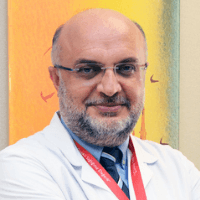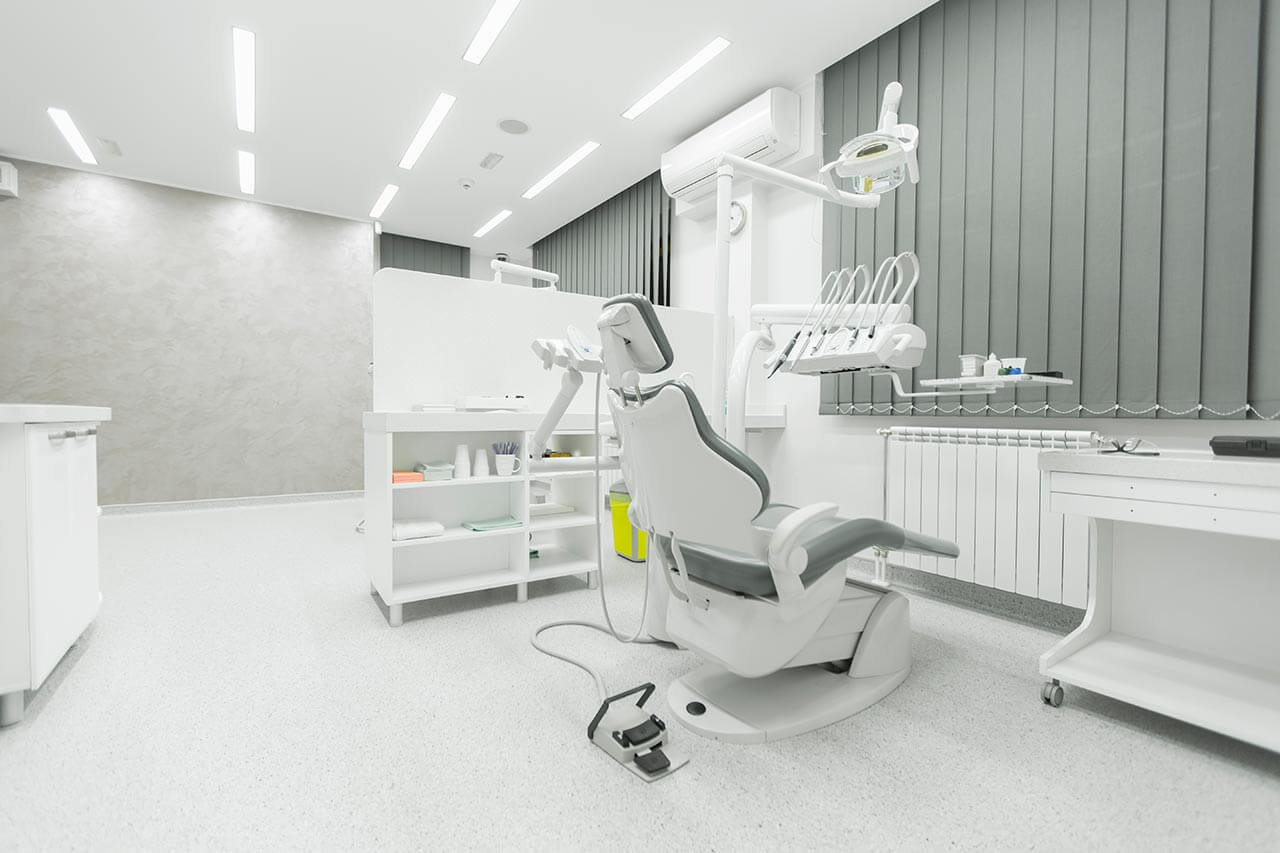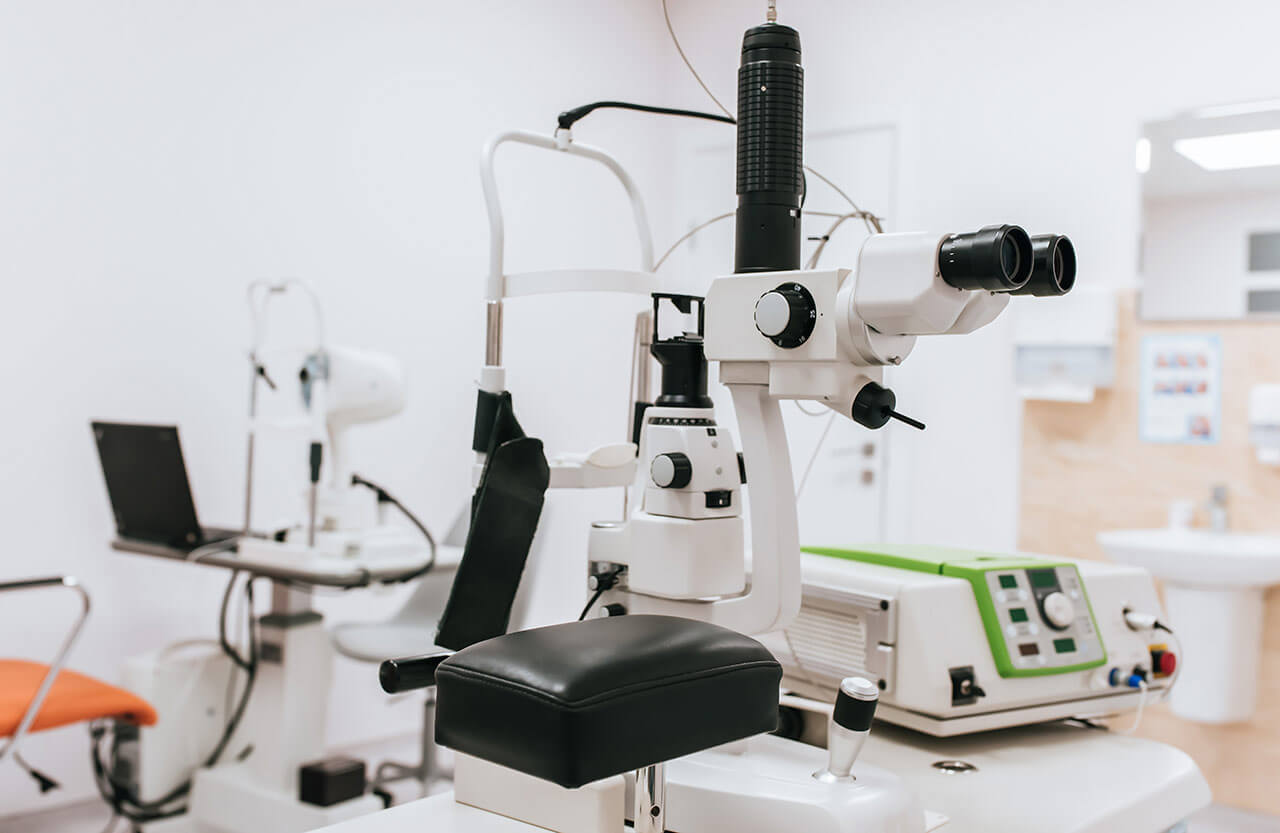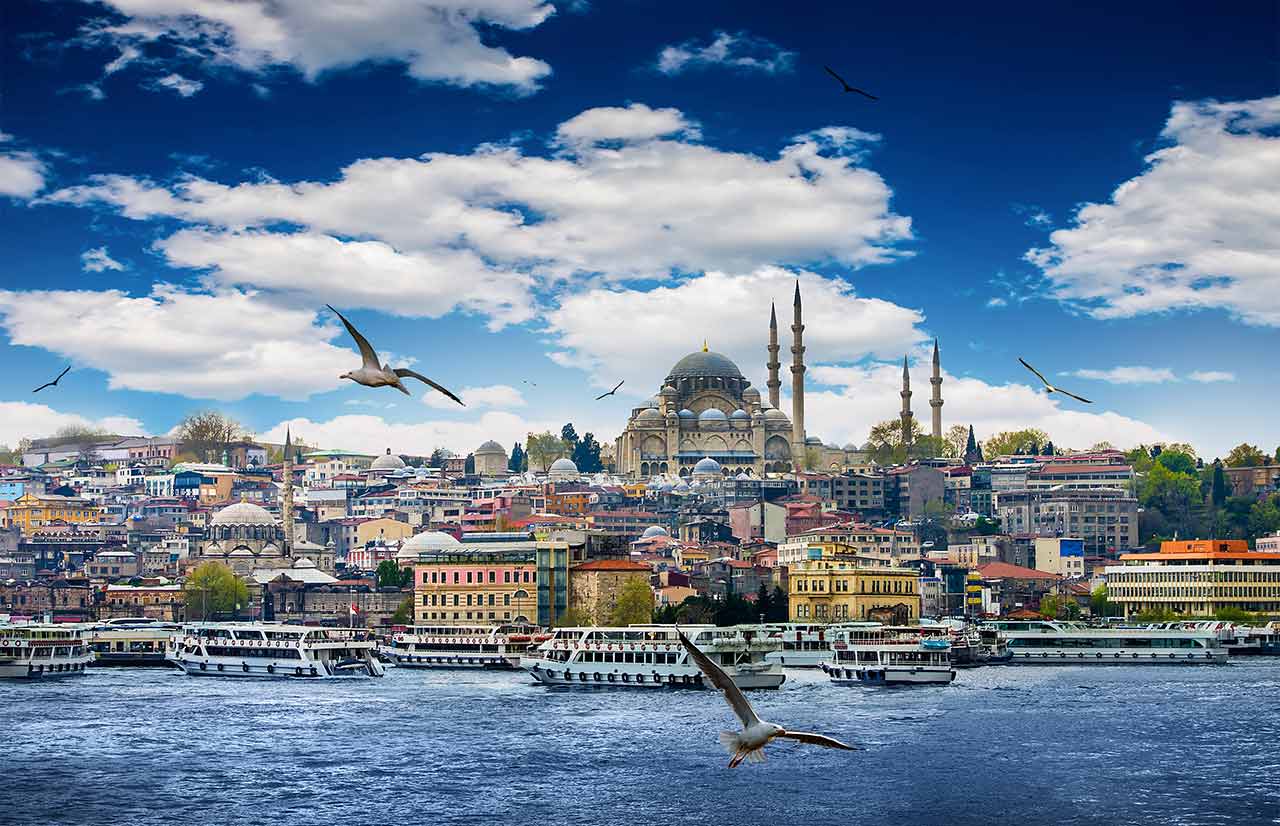
The program includes:
- Initial presentation in the clinic
- clinical history taking
- physical examination
- review of medical records
- laboratory tests:
- complete blood count
- general urine analysis
- biochemical analysis of blood
- indicators of inflammation (CRP, ESR)
- indicators blood coagulation
- x-ray examination of the hip
- MRI scan of the hip
- preoperative care
- hip replacement (hip endoprosthesis)
- symptomatic treatment
- control examinations
- physiotherapeutic procedures
- orthopedic appliances
- the cost of essential medicines and materials
- nursing services
- full hospital accommodation
- explanation of future recommendations
The program includes orthopedic rehabilitation:
- Primary presentation in the clinic
- medical history, including family history
- complex neurological and orthopedic examinations
- X-ray examination
- complex neurophysiological examinations
- individual rehabilitation program, which includes:
- Wii Fit training in the use of the balance
- neuropsychological therapy
- functional therapy of the upper extremities (ArmeoSpring)
- kinesitherapy (physiotherapy)
- biocontrol with feedback
- healing deep muscle massage
- acupuncture of spasticity and pain syndromes
- occupational therapy
- psycho-educational classes
- Individual physiotherapy
- microcurrent treatment
- fangotherapy / cryotherapy
- antispasmodic drug therapy
- mobilization of limb joints
- hydrotherapy / massage therapy / reflexology
- training on special trainers
- and etc.
- nurses care
- stay in the hospital with full board
- symptomatic and drug therapy
How program is carried out
Preliminary preparation for hip replacement includes quitting smoking and drinking alcohol; cancelling non-steroidal anti-inflammatory drugs (diclofenac, ibuprofen); cancelling anticoagulants (warfarin); normalization of body mass, if possible.
Preoperative examination, including consultation with an anesthesiologist and necessary related specialists, takes 1-2 days. According to its results, the most suitable endoprosthesis is selected.
Hip replacement. The operation is performed under general anesthesia. The patient lies on his side, the affected leg is bent and fixed in this position. The surgeon makes an incision 15-20 cm long, minimally traumatizing the muscles and nerve endings. Through this incision, miniature instruments are inserted to remove the damaged joint structures. Healthy bone is adjusted for further reliable implant fixation.
The surgeon installs a femoral stem in the center of the upper part of the femur. Ball-shaped head of the joint is fixed on it. The surgeon also implants a special liner that facilitates movement of the leg and protects the structures of the prosthesis. After the primary fixation of the prosthesis components, the doctor assesses the joint range of motion, as well as the length and symmetry of the lower limb.
The implant is fixed with cement or cementless method. The doctor treats the operating field with antiseptics, conducts its final revision and sutures the wound layer by layer. A temporary drainage is installed in the joint, and a bandage is applied on top.
Postoperative care. During the first day after the intervention the patient stays in the intensive care unit, under round-the-clock medical supervision. After that, with a smooth course of the postoperative period, the patient is transferred to a regular ward and the drains are removed. The range of motion expands gradually, from light toes movements to walking. Walking with the use of walking aids is allowed in 3-5 days after the operation.
Rehabilitation. The rehabilitation program begins after the transfer of the patient from the intensive care unit to a regular ward. It includes physical activity (from exercises in bed in the early days to exercises in the gym), physiotherapy, massage (including lymphatic drainage), exercises in the water. The rehabilitation program is constantly being adjusted according to the needs of the patient.
Required documents
- X-ray examination of the hip joints
- MRI scan of the hip joints, if available
Service
You may also book:
 BookingHealth Price from:
BookingHealth Price from:
About the department
The Department of Adult and Pediatric Orthopedics, Traumatology, Hand, Foot Surgery and Spinal Surgery at the Memorial Atasehir Hospital Istanbul offers the full range of medical services for patients with musculoskeletal diseases and injuries. The department's specialists provide high-quality conservative and surgical treatment of orthopedic diseases of any severity in adults and children. The clinical activities of the department's doctors are focused on knee, shoulder, elbow, ankle and wrist arthroplasty, on the treatment of diseases and deformities of the hand and foot, on the treatment of osteomyelitis, as well as on the treatment of musculoskeletal malignancies and correction of unequal leg length. The department's medical team is distinguished by exceptional qualifications in the field of trauma treatment, including especially complex ones. The department is headed by Prof. Dr. med. Mahir Mahirogulları.
The department successfully uses innovative drugs, bandages, minimally invasive and arthroscopic surgical techniques, which provide excellent results and allow the patient to regain freedom and joy of movement without pain. Each clinical case is considered on an individual basis, which helps the doctors to optimally combine treatment methods for the restoration of bones, joints, ligaments, muscles and other anatomical structures of the musculoskeletal system.
The department's doctors always start with conservative treatment, avoiding radical therapeutic measures. However, many pathologies require invasive interventions, that is why the department's orthopedic surgeons practice sparing operations, which are the gold standard of modern surgery. The surgeons successfully perform arthroscopic surgical procedures to treat ligament tears, meniscal lesions, arthrosis and arthritis. Such interventions exclude the opening of the joint, which is quite traumatic for the patient and requires a long recovery after surgery. When performing arthroscopic surgery, the surgeon makes three small punctures in the area of the affected joint, through which he inserts surgical instruments, a light source and a miniature video camera. The image from the video camera is displayed on a large monitor, which allows the doctor to clearly see the surgical field.
The department's specialists have rich and successful experience in the treatment of diseases and injuries of the hand. To restore hand function and eliminate pain, the doctors mostly use microsurgical and endoscopic techniques. The department has advanced medical equipment, which helps perform the most complex high-precision operations with minimal injury rate to the healthy tissues of the patient's hand. The department's competent surgeons perform finger surgeries, including finger transplantations, joint replacement surgery, tendon reconstructive surgery, surgery to remove tumors of the upper limbs, as well as surgery to treat arthritis and arthrosis. In addition, the department performs operations to correct congenital defects of the hands and fingers. The surgeons perfectly cope with the correction of such defects as undeveloped or missing fingers, polydactyly and syndactyly, hand deformities, etc. After surgical treatment, patients undergo rehabilitation, including physiotherapeutic procedures, intra-articular injections and others.
The department often admits patients with musculoskeletal injuries, including sports ones. Based on the diagnostic results, the attending physician decides on the type of therapy – conservative treatment with plaster bandages and drugs or a surgical intervention. Obviously, conservative treatments are the first-line therapy. If surgery is required, the preference is always given to minimally invasive techniques, which involve only small punctures instead of large incisions, which significantly reduce the invasiveness of the operation and period of postoperative recovery. If necessary, computer navigation systems can be used to accurately imagine the surgical field during the intervention.
The department's medical team also specializes in the treatment of musculoskeletal diseases and injuries in children and adolescents under the age of 16. The department is one of the few highly specialized medical facilities of this kind in Turkey. The most common orthopedic conditions in children include gait abnormalities, foot deformities, hand defects, hip dysplasia, and spinal deformities.
The department’s main clinical focuses include:
- Knee, shoulder, elbow, ankle and wrist arthroscopic surgery
- Joint replacement surgery
- Hand microsurgery
- Trigger fingers
- Carpal tunnel syndrome
- Dupuytren's contracture
- Hand neoplasms
- Flexor and extensor tendon injuries
- Burns and frostbite of fingers, their complications
- Ganglion
- Foot surgery
- Flat feet
- Clubfoot
- Pes cavus
- Achilles tendon rupture
- Heel spur
- Congenital foot deformities
- Hammer toes
- Spinal surgery
- Scoliosis
- Spondylolisthesis (vertebral displacement)
- Spinal instability
- Spinal fractures
- Treatment of musculoskeletal injuries, including sports ones
- Treatment of orthopedic diseases and injuries in children and adolescents
- Congenital musculoskeletal deformities
- Gait abnormalities
- Diseases and deformities of the foot
- Diseases and deformities of the hand
- Hip dysplasia
- Bone fractures and other musculoskeletal injuries
- Other therapeutic options
Curriculum vitae
Professional Career
- Since 2016 Head of the Department of Adult and Pediatric Orthopedics, Traumatology, Hand, Foot Surgery and Spinal Surgery at the Memorial Atasehir Hospital Istanbul, Istanbul, Turkey.
- Since 2016 Physician in the Department of Adult and Pediatric Orthopedics, Traumatology, Hand, Foot and Spinal Surgery at the Memorial Sisli Hospital Istanbul, Istanbul, Turkey.
- 2012 - 2016 Physician in the Department of Orthopedics and Traumatology at the Medipol Mega University Hospital Istanbul, Istanbul, Turkey.
- 2010 - 2012 Physician in the Department of Orthopedics and Traumatology at the Haydarpasa Training and Research Hospital, Istanbul, Turkey.
- 2009 - 2010 Physician in the Department of Orthopedics and Traumatology at the Sarikamis Military Hospital, Kars, Turkey.
- 2007 - 2009 Physician in the Department of Orthopedics and Traumatology at the Haydarpasa Training and Research Hospital, Istanbul, Turkey.
- 2000 Specialist in Orthopedics and Traumatology, NATO Peacekeeping Forces.
Higher Education and Postgraduate Training
- 2005 - 2006 Scholarship program, Department of Orthopedic Surgery, Wake Forest University, Winston-Salem, USA.
- 1995 - 1999 Specialized training in Orthopedics and Traumatology, Faculty of Medicine, Gulhane Military Medical Academy, Istanbul, Turkey.
- 1986 - 1992 Study of Human Medicine, Faculty of Medicine, Gulhane Military Medical Academy, Istanbul, Turkey.
Scientific Publications and Reports
- 45 presentations and posters at the international congresses.
- 70 publications in international journals.
- 80 presentations and posters at the congresses in Turkey.
- 20 publications in Turkish journals.
- Editing translations in 6 books, translation of 39 chapters, authorship of chapters in the book of the international edition.
Awards and Honors
- 2015 Best Oral Presentation Award of the Turkish Association of Orthopaedics and Traumatology (TOTDER).
- 2007 Third Derviş Manizade Award.
Memberships in Professional Societies
- Turkish Society of Orthopaedics and Traumatology.
- Turkish Society of Sports Traumatology, Arthroscopy and Knee Surgery (General Secretary).
- International Society of Arthroscopy, Knee Surgery and Orthopaedic Sports Medicine (ISAKOS).
- Turkish Society of Shoulder and Elbow Surgery.
- European Society for Sports Traumatology, Knee Surgery and Arthroscopy (ESSKA).
- Turkish Hip Arthroplasty Society.
Photo of the doctor: (c) Memorial Ataşehir Hospital
About hospital
The Memorial Atasehir Hospital Istanbul is a private medical complex, within the walls of which the patient is expected to receive excellent medical care and responsive care. The medical complex is part of the Memorial Healthcare Group, which consists of 14 hospitals that provide a wide range of services.
The hospital began its work in May 2008 and today enjoys the status of one of the best medical facilities in Istanbul. The medical center specializes in ophthalmology, plastic surgery, dentistry and reproductive medicine, cardiac surgery, oncology, etc. The hospital also includes an advanced Transplant Center – the success rate of liver transplantation here is 99%, kidney – 93.5%. Clinical practice has been awarded the prestigious Joint Commission International (JCI) certificate, which confirms the highest standards of patient service quality and excellent treatment success rates.
The hospital is open 24 hours a day, 7 days a week to provide patients with comprehensive and urgent treatment. It has a progressive infrastructure, state-of-the-art medical and technical base for high-precision diagnostics, effective conservative and surgical treatment, as well as all conditions for the best possible patient comfort.
The health of patients is in good hands of exclusively highly competent doctors who have received medical education at the best universities in Turkey, and have also completed numerous internships in leading hospitals in Europe and the United States. The specialists keep pace with cutting-edge innovations in medicine and seek to heal patients even with the most complex pathologies.
Photo: (c) depositphotos
Accommodation in hospital
Patients rooms
The patients of Memorial Atasehir Hospital Istanbul live in comfortable single or double rooms made in a modern design. The standard patient room includes a comfortable automatically adjustable bed, a bedside table, a wardrobe, a telephone and a TV. Each patient room has an ensuite bathroom with shower and toilet. To provide maximum convenience for patients, the patient rooms also have Wi-Fi.
Meals and Menus
The patient and the accompanying person are offered tasty and balanced three meals a day. If for some reason you do not eat all foods, you will be offered an individual menu. Please inform the medical staff about your food preferences prior to treatment.
Further details
Standard rooms include:
Accompanying person
During the inpatient program, the accompanying person can live with the patient in a patient room or a hotel of his choice. Our managers will help you choose the most suitable option.
Hotel
During an outpatient program, the patient can stay at the hotel of his choice. Our managers will help you choose the most suitable option.




